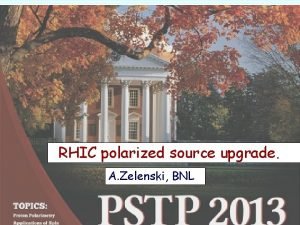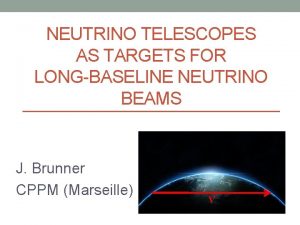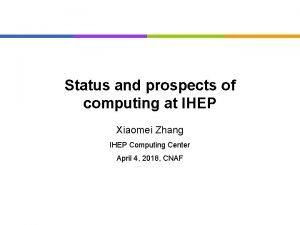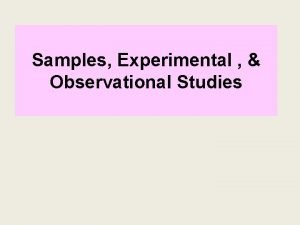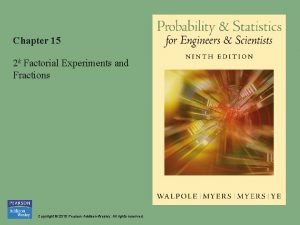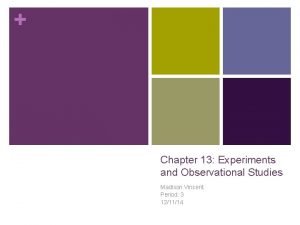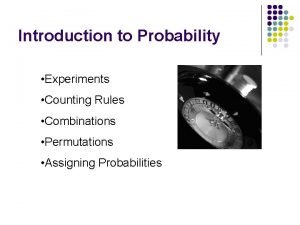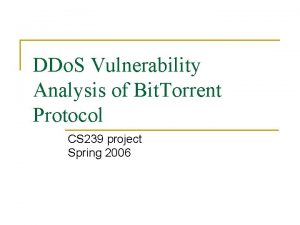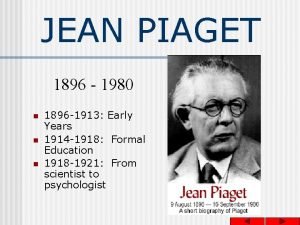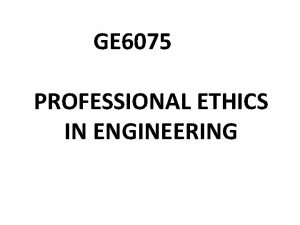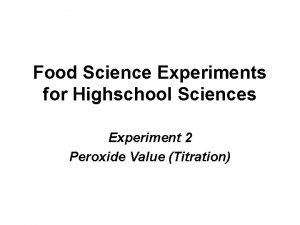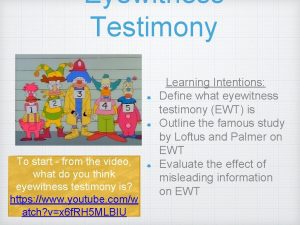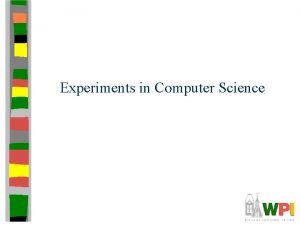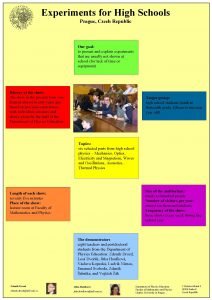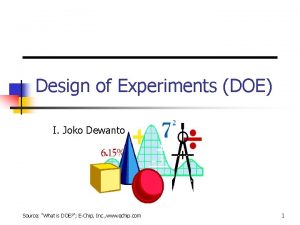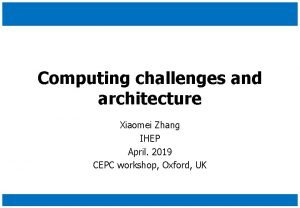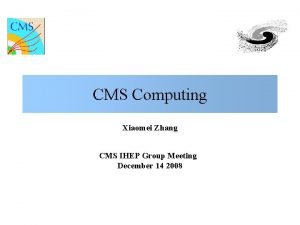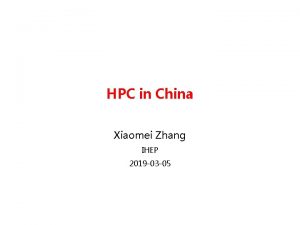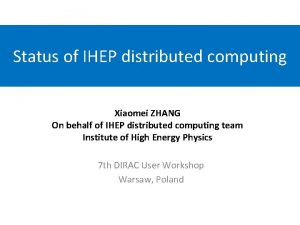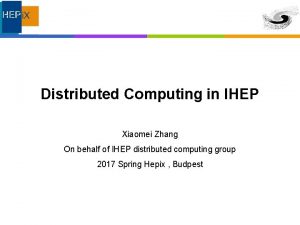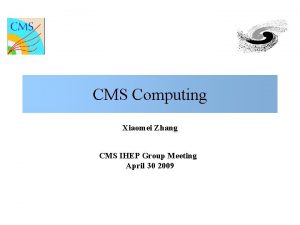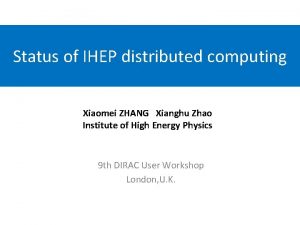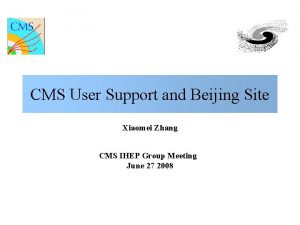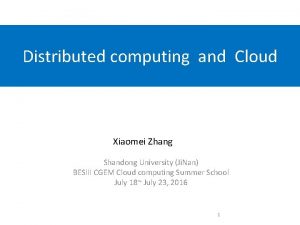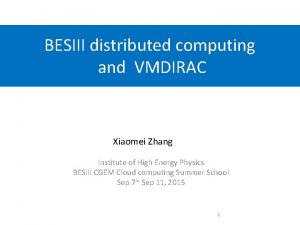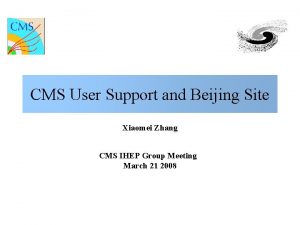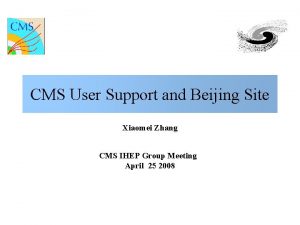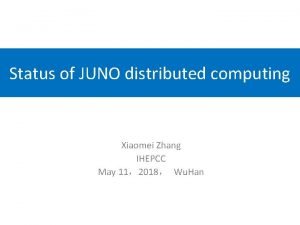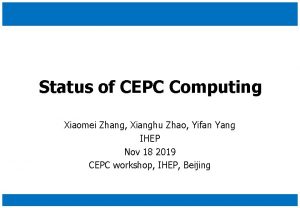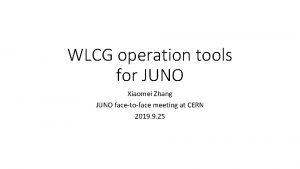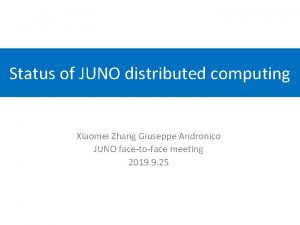IHEP Experiments and Software Development Xiaomei Zhang IHEP




















- Slides: 20

IHEP Experiments and Software Development Xiaomei Zhang IHEP Computing Center

Outline v Overview of IHEP experiments v General Challenges v Challenges and practice of software l JUNO Neutrino experiment v Status and challenges of computing v Summary 2

IHEP and IHEP experiments (1) v Institute of High Energy Physics, CAS, Beijing, China v The largest fundamental research center in China l v Particle physics, Astro. Particle physics, Accelerator and synchrotron radiation technology and applications The major institute conducts the high energy physics experiments in China l Collider : n n BESIII – Study physics on tau-charm energy region CEPC – Precision measurement of the Higgs/Z boson BTC Circular e + e. I P Electron 1 Positron Booster(50 K m CEPC ) Collider Ring(50 I P LTB e+ e- BTC Collider Lina c (24 0 m)

IHEP and IHEP experiments (2) v v Neutrino : l Daya. Bay – measurement of the missing angle l JUNO -- determine neutrino mass hierarchy and precisely measure oscillation parameters Astrophysics: l LHAASO -- detector array for high energy gamma ray and cosmic ray detection (after YBJ) l Ali -- Observation of Gravitational Waves l HXMT/e. XTP -- X-ray astronomy satellite for high energy astrophysical space observations LHAASO Large High Altitude Air Shower Observatory 4

Timeline 5

Data Volume (roughly) Estimate of Data Volume before 2018 vs. after 2018 (PB) v Current: 160 140 120 100 v l 10 PB(disk)+5 PB(tape) = 15 PB l 20 K CPU cores l 3. 5 ~4 times larger than the last 5 year In the next 10 years, > 10 larger 80 l > 150 PB 60 40 20 0 before 2018 after 2018 BESIII DYB JUNO LHAASO LHC others 6

Network v Network capacity is >10 times faster in 3 years v In 2012, 10 Gbps LAN, 1 Gbps to Europe and USA v Since 2015, 160 Gbps LAN, 20 Gbps outbound,10 Gbps to Europe/USA v In 2018 IHEP joined LHCOne, with CSTNet and CERNET v l Two dedicated 20 Gbps are added l LHC Beijing T 2 are switching to LHCOne l Other Non-LHC experiments are applying to benefit from this link Network provides good env for international cooperation 7

General Challenges v Increased scale of experiments, number of experiments, complexity of experiments, data volume and resource need v v v Manpower on software and computing not grow accordingly v v v fully exploit the advantage of modern hardware architectures integrate available heterogenerous resources, benefit from the fast development of network Software and computing work not well recognized among physics community Eg. Increased resource supports from domestic collaborators, but still weak site support To make things “easier” l Common infrastructures to cover needs of all experiments on both software and computing, one effort to benefit all l “Easy”grid to fit into the need without too much efforts of sites 8

Deep view of JUNO experiment • The central detector is made of liquid scintillator (LS) and ~18, 000 PMTs • For such a large LS detector, the rate of cosmic muons reaching the inner detector is about 3 Hz • Understanding muon induced background is crucial part of the experiment • • One 100 Gev comic Muon create several millions of optical photons Event correlation, analysis has to cover more than one event in one loop 9

Simulation (1) v Current performance efforts are focused on parallelism v Benefit from the multi-threading support and thread safe of Geant 4 10. x, performance optimization with parallelism in simulation have been done l v Got a good speed-up In ACAT 2017, “Parallelized JUNO simulation software based on SNi. PER” ( poster Lightning Talk) 10

Simulation (2) v Simulation of optical photons produced by Muon in LS poses severe constraints on both CPU time and Memory l v CPU time >95%, memory>2 GB, > 2 hours/event Push us to explore ways for optical photons simulation l Massive parallelism with GPU , achieving 1000 times speed-up l Fast simulation, and improve it with Machine Learning in future Tao Lin, fast simulation. J. Phys. Conf. Ser. 898 (2017) no. 4, 042001 Simon Blyth, Opticks, GPU full simulation. J. Phys. Conf. Ser. 898 (2017) no. 4, 042001 11 11

Reconstruction v Precisely rejecting muon induced background is the hard part due to complexity of effects of optical photons in LS v Traditional way with optical model has difficulties to make corrections with such complexity v We are looking into Deep Learning which help us learn the relationship between the event signals and the track parameters automatically v Preliminary study has shown very promising results 12

Analysis v In 2020 s, BESIII enters in the last part of its life cycle v With large aggregated data, analysis will become a significant part of BESIII data processing v Partial Waves Analysis with GPU could become more important v l Got experience a few years ago, but only used by small groups due to complexity l How to extend it to the whole group in an easy way? I/O could also be bottleneck for large scale of analysis 13

Data-flow processing framework v Gaudi was adopted in BESIII since 2008 l v v SNi. PER was developed to meet special requirements of Neutrino program l Multi I/O stream, Event correlation and Hits mixing l Light-weighted and simple, becoming a common framework for IHEP medium and small experiments SNi. PER-MT is being developed to support parallelism l v Work fine in collider experiments 2017 ACAT talk “Parallel computing of SNi. PER based on Intel TBB” Future plans and challenges l Full parallelization, Support Machine Learning from infrastructure l 14 Adapt to heterogeneous hardware to allow usage of more resource

Computing v HTCondor with Lustre provides HTC platform for all the IHEP experiments v IHEPCloud based on Open. Stack was built in 2015 to ease the way of managing large scale of resources v With parallelism and machine learning becoming hot among IHEP experiments, HPC farm is being built up last year in IHEP using SLURM v How to efficiently organize and share resources in mixture 15 of HTC and HPC environment?

Distributed computing(1) v IHEP distributed computing is built in 2014 l v v Integrate resources from collaborations and commercial resources With limited manpower, make things as easy as possible l Adopt DIRAC as WMS, simple and flexible l Allow sites to join just as clusters from the beginning l One big central SE, sites allow to join without SE Good cooperation with DIRAC community l Join DIRAC consortium in 2016 l Benefit a lot from DIRAC l Join the efforts on common need 16

Distributed computing(2) v Recent efforts l Become a common infrastructure for multi-experiments n n l Integrate more available resources n n l Done with Cloud, Cluster…… Use Singularity to avoid differences from OS versions Multi-core supports for parallelized experiment software n l Work have been done on WMS and file catalog Need more efforts on condition database, bookkeeping, monitoring, data transfer…… Efficiency need to be further study with real use cases All the above work have the related CHEP and ACAT posters and talks 17

Distributed computing(3) v Challenges l With larger scale and modern network, need more “smart” storage n l Integration of HTC and HPC resources n l Hierarchy storage? Data lake? not easy with complexity of HPC resources With larger scale, site maintenance is a pain n Current grid infrastructure need too much efforts, Downtime and Resource information, Security, monitoring, operation groups……. 18

cooperation v v We already have some good experience on mini-workshops with international software and computing groups l BESIII Cloud computing Summer School with INFN, Sep 2015 l A four days hands-on Geant 4 Mini-workshop with INFN, May 2017 l IHEP network security workshop with CERN, Sep 2017 Looking forward to more chances on cooperation and sharing efforts 19

Summary v IHEP experiments cover wide fields, including collider, Neutrino, Astrophysics…. . v Have common concerns with HSF about future challenges v In 2020 s, our software challenges mainly come from Neutrino experiments l Push our computing and software to be on the road of parallelization v Building common computing and software infrastructure also our plans to serve all experiments v Look forward to closer cooperation with other experiments 20
 Protvino
Protvino Ihep
Ihep Ihep housing
Ihep housing Surveys, experiments, and observational studies worksheet
Surveys, experiments, and observational studies worksheet What is survey experiment or observation?
What is survey experiment or observation? 2k factorial experiments and fractions
2k factorial experiments and fractions Chapter 13 experiments and observational studies
Chapter 13 experiments and observational studies Miller and urey's experiments attempted to demonstrate
Miller and urey's experiments attempted to demonstrate Counting rule in probability
Counting rule in probability Experiments on animals pros and cons
Experiments on animals pros and cons Nn torrent
Nn torrent Http://earthobservatory.nasa.gov/experiments/biome/
Http://earthobservatory.nasa.gov/experiments/biome/ Test your hypothesis
Test your hypothesis Jean piaget 1896 a 1980
Jean piaget 1896 a 1980 Engineering projects vs standard experiments
Engineering projects vs standard experiments Science experiments for highschool
Science experiments for highschool Eyewitness testimony video experiments
Eyewitness testimony video experiments Computer science experiments
Computer science experiments Czech experiments
Czech experiments Griffith 1928
Griffith 1928 Design of experiments doe
Design of experiments doe
